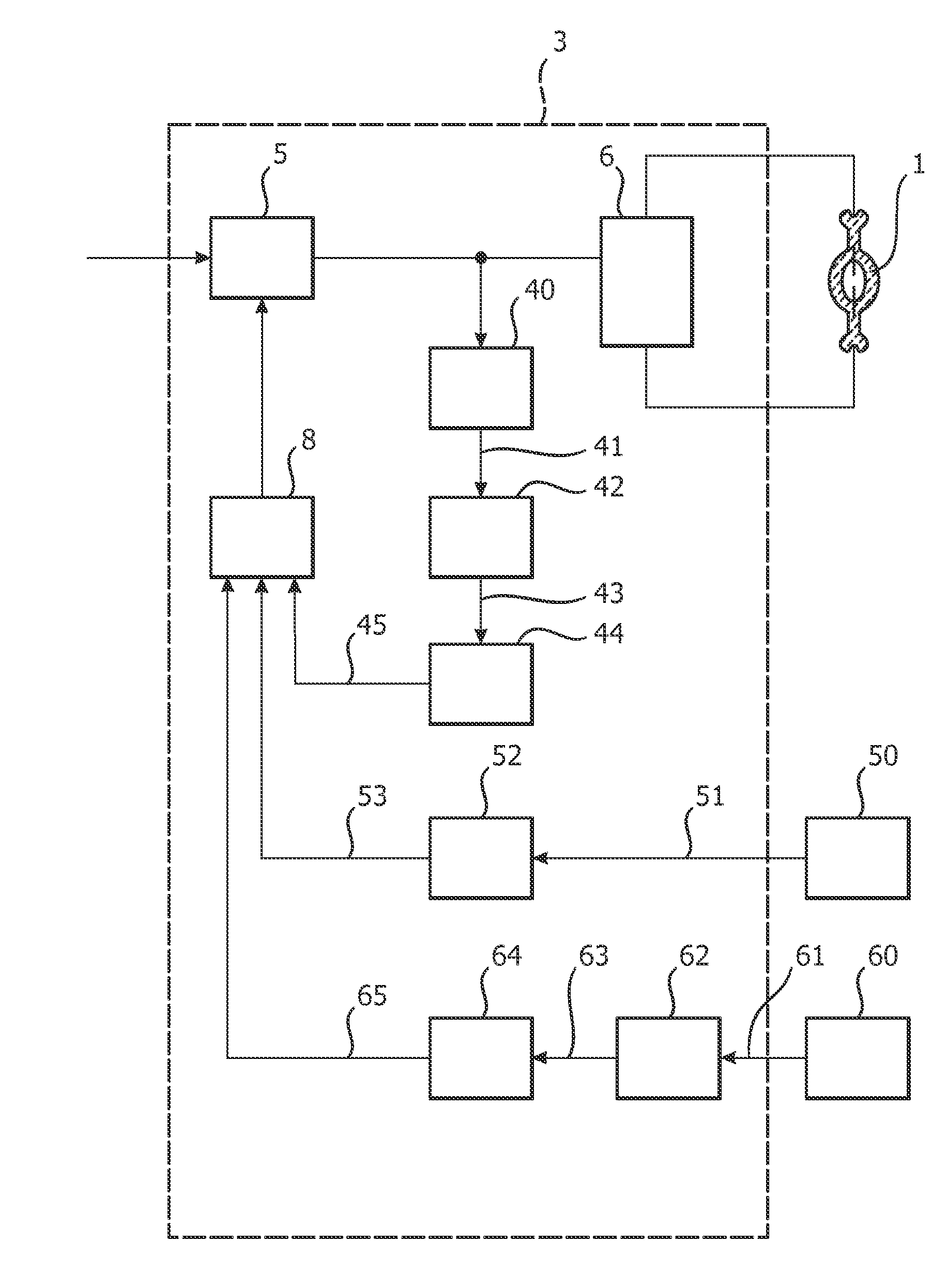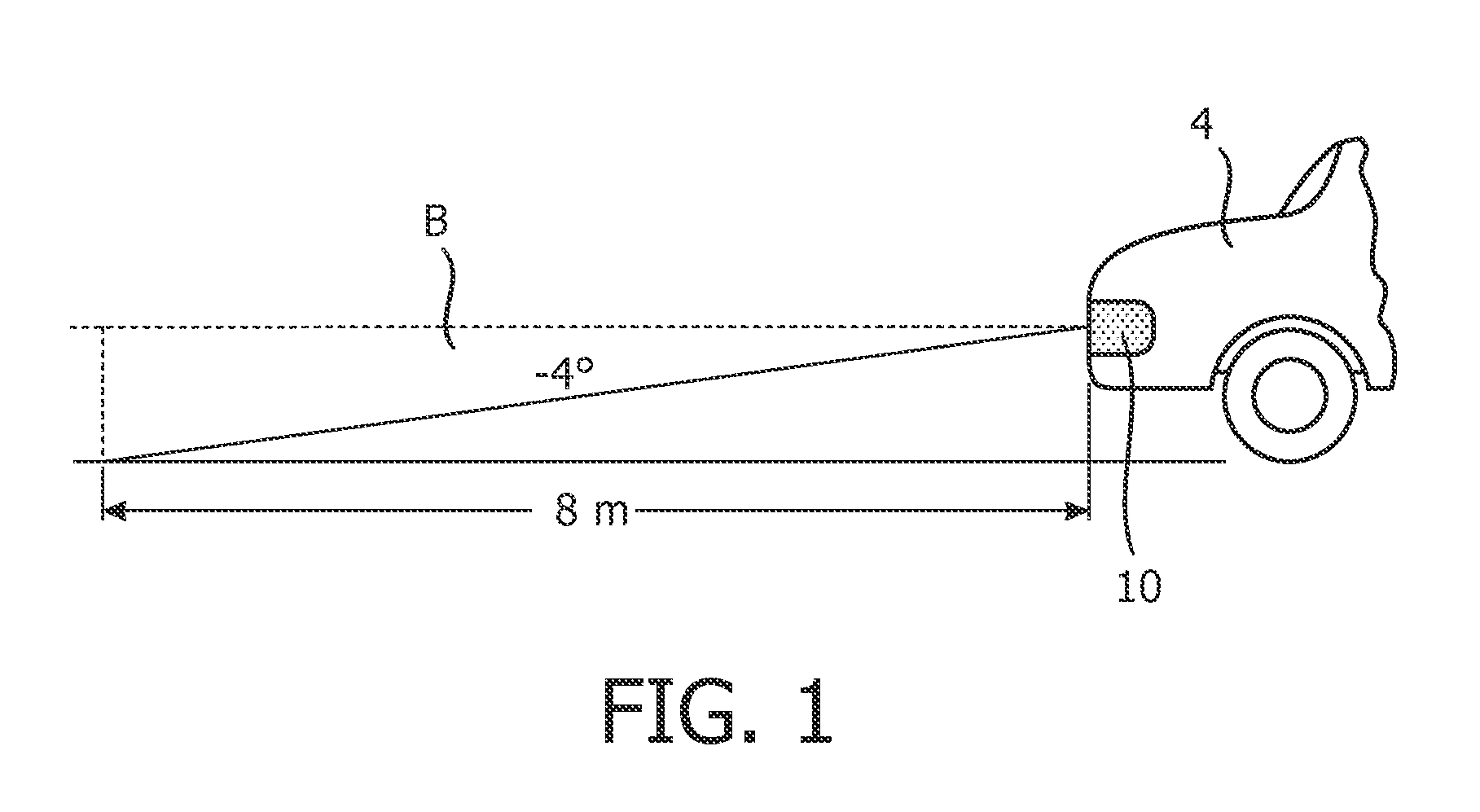Method of driving an arc-discharge lamp
a technology of arc-discharge lamps and drivers, which is applied in the direction of electrical devices, instruments, light sources, etc., can solve the problems of low light output modulation, sudden jolt or displacement, and persistent light output, and achieve the effect of suppressing the low-frequency fluctuation of luminous flux
- Summary
- Abstract
- Description
- Claims
- Application Information
AI Technical Summary
Benefits of technology
Problems solved by technology
Method used
Image
Examples
Embodiment Construction
[0033]FIG. 1 shows an automobile front beam issued by a front headlamp of a vehicle. For an automobile, the region in which the perceptible and annoying forefront flicker originates is generally up to about 8 metres in front of the vehicle and in the beam region up to about 4° below a horizontal plane of the headlamp.
[0034]FIG. 2 shows a simplified schematic representation of an arc-discharge lamp 1 with a discharge-arc 2 extending between two electrodes 10. In normal operation, as indicated in the upper part of the diagram, owing to an upward convection in the burner, the discharge arc extends as shown between the two electrodes 10. When the lamp 1 is subject to an abrupt downward displacement, shown in the centre part of the diagram and indicated by the downward arrow, the discharge arc 2 is briefly ‘shortened’ as shown. This shorter discharge-arc is associated with a decrease in lamp voltage, and therefore also with a decrease in luminous flux. Similarly, when the lamp 1 is subje...
PUM
 Login to View More
Login to View More Abstract
Description
Claims
Application Information
 Login to View More
Login to View More - R&D
- Intellectual Property
- Life Sciences
- Materials
- Tech Scout
- Unparalleled Data Quality
- Higher Quality Content
- 60% Fewer Hallucinations
Browse by: Latest US Patents, China's latest patents, Technical Efficacy Thesaurus, Application Domain, Technology Topic, Popular Technical Reports.
© 2025 PatSnap. All rights reserved.Legal|Privacy policy|Modern Slavery Act Transparency Statement|Sitemap|About US| Contact US: help@patsnap.com



